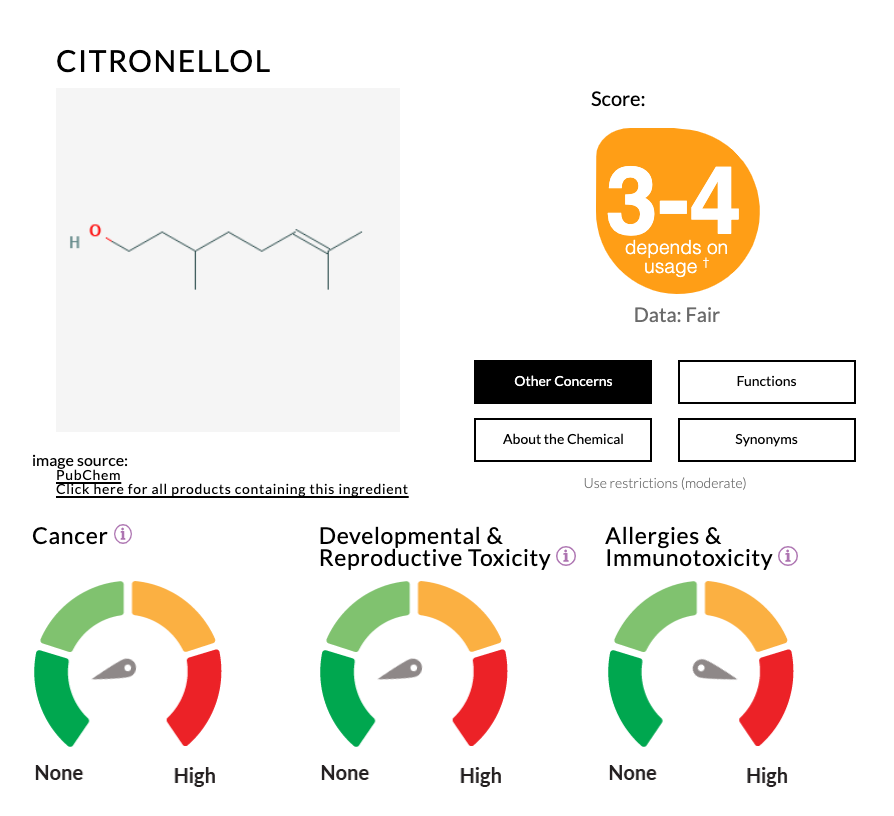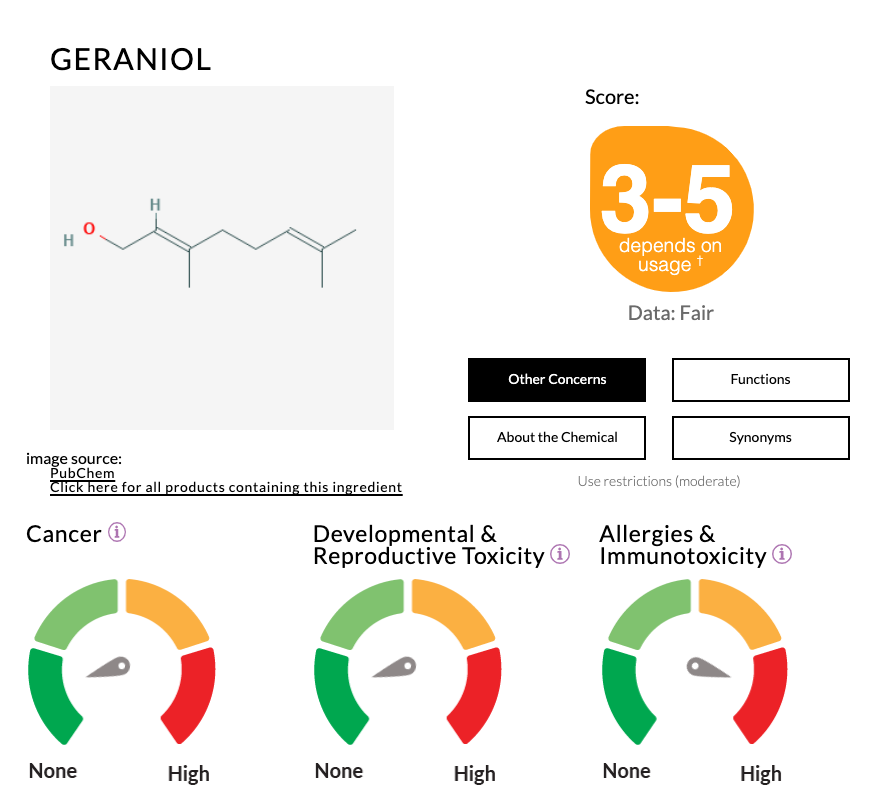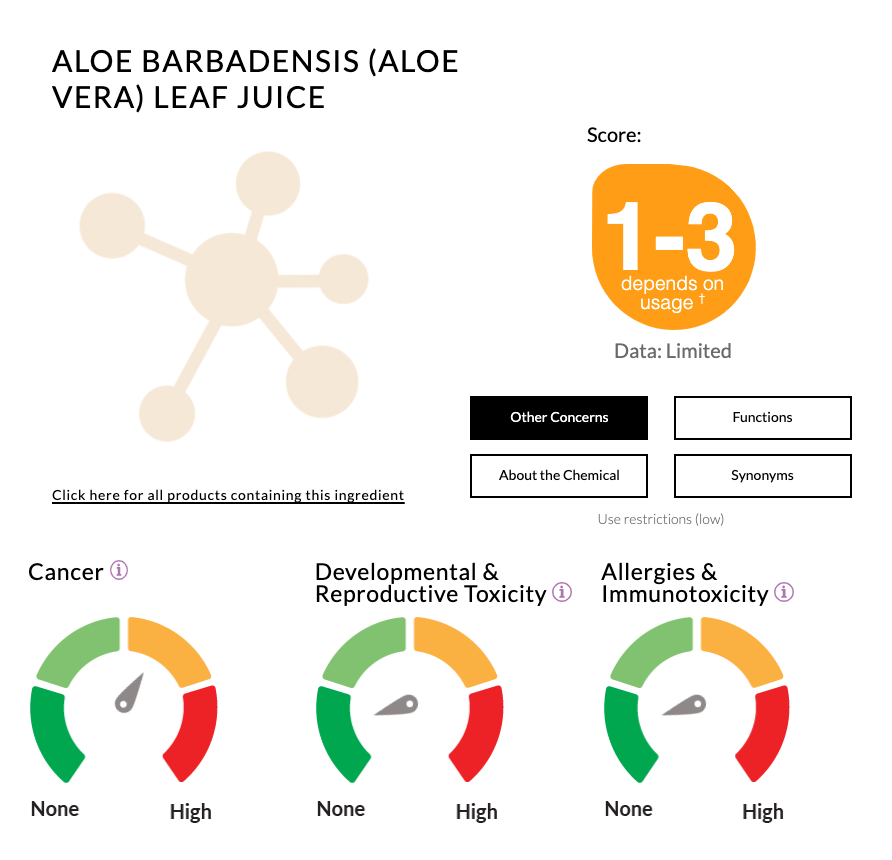Is EWG Skin Deep reliable?
EWG or the Environmental Working Group is a private, non-profit organization funded by private foundations, individuals and companies. You’ve probably heard of the EWG’s Dirty Dozen (a list of the “dirtiest” or pesticide-covered fruits and vegetables) and the EWG’s annual sunscreen report.
More and more companies are promoting clean beauty and advertising all-natural and chemical-free ingredients. Enter the EWG Skin Deep Database.
EWG Skin Deep is a searchable list of personal care products with EWG’s internal product rating based on whether it has toxic ingredients. And some brands now even reference their low scores on EWG as a badge of honor for product safety. Unfortunately, there are flaws with the EWG Skin Deep database that you should consider before buying into the EWG rating system.
How does the EWG Skin Deep database work?
The EWG score is on a scale from 1 to 10, with 0 reserved for the most coveted award: EWG Verified. If a product scores a green “1,” it’s considered non-toxic and most consumers race to the store to snatch it up. But if a product contains toxic ingredients, often potentially carcinogenic or cancer-causing, you’ll see a very stern, red “10” telling you to stay away.
You can also dive deeper into the ratings by seeing each ingredient’s grade and the scary concerns that may come from each chemical, such as developmental or reproductive toxicity or endocrine disruption. The database takes the average of each ingredient’s rating to give you the product’s overall EWG score.
7 reasons you shouldn’t trust EWG ratings
While the EWG report gives you great insight into what goes into your products, you have to take it with a grain of salt.
1. Some ingredients are rated unfairly low
EWG doesn’t always take raw materials and chemical composition into consideration. For example, it lists sodium cocoyl sulfate as a 1 with no listed health concerns. That’s great! On the other hand, sodium laurel sulfate has a 1-2 rating but has a terrible rap sheet:
Strong evidence as a human irritant
Toxic or harmful to organ systems
But here’s the kicker, sodium cocoyl sulfate and sodium laurel sulfate are chemically similar with one difference. Instead of starting with one laurel alcohol, sodium cocoyl sulfate begins with a blend of fatty acids that reacts with sulfuric acid and sodium carbonate. But only one of these is labeled as toxic.
Image courtesy of EWG Skin Deep
Image courtesy of EWG Skin Deep
2. Some ingredients are rated unfairly high
Skin Deep tends to villainize essential oils because they are possible skin irritants. For example, rose oil is composed of two major aromatic chemical components: citronellol and geraniol. Citronellol gets a rating of 4, and geraniol has a score of 5.
The issue is that essential oils are only irritants if you are allergic, which isn’t an issue for everyone. The score unfairly penalizes these chemicals, not for causing toxic build-up in the body but mainly for allergy concerns.
Image courtesy of EWG Skin Deep
Image courtesy of EWG Skin Deep
3. Limited data availability
Ingredients with no or low data are automatically assigned a low score. That’s exactly what happened with the sodium cocoyl sulfate and sodium laurel sulfate fiasco.
Sodium cocoyl sulfate has no data and no published scientific studies, earning it a score of 1. Unfortunately, sodium laurel sulfate has been around longer and has landed itself on a few lists, including the Environment Canada Domestic Substance List, which earns it a higher toxicity score.
4. Studies are blown out of proportion
The EWG loves to reference scientific studies. But their interpretation may not be accurate or applicable. Most lab studies expose animals to astronomically high doses of a chemical in a short amount of time. And in many cases, the substance is eaten, inhaled or injected directly into the blood, according to the American Cancer Society.
Here’s an example of misapplication: Aloe can have a score anywhere between 1 and 3, citing that it’s a possible human carcinogen. (To be clear, EWG displays a 3 in yellow to indicate a warning sign. So any score 3 and up can cause people to second-guess the product.)
But the studies that suggest that aloe can potentially cause cancer refer to aloin — the extract between the outer leaf of the aloe plant gel inside — that rats ingested. You can bet that our beauty products contain the aloe vera gel or juice — not aloin. And if you want to be extra cautious, just don’t eat your skincare because I’m not giving up my favorite after-sun aloe vera gel treatment.
Image courtesy of EWG Skin Deep
It’s important to remember that chemicals in cosmetics are in much lower doses, spread out over a longer period of time, and are usually applied onto the skin, which acts as a barrier. You have to consider the dose, length of exposure, and method of administration. While these studies provide good insight, they don’t prove causation.
Plus, substances that cause cancer in rats may not cause cancer in humans because our bodies process things differently. Think about how we can eat chocolate, but it could make your dog extremely sick.
5. Companies update formulas
Remember your once holy grail mascara that now feels tacky on the 5th tube? Yes, companies change their formulas. But EWG doesn’t automatically update this in their database, which may cause you to skip out on a product.
6. Companies can cheat the system
If a brand wants to play fast and loose with chemistry, they can create a chemical compound for which the EWG doesn’t have any data. And since no data automatically gets a low score, companies can manipulate the system to appear to have lower toxicity numbers.
We’ve seen that with sodium cocoyl sulfate where they swap out one ingredient and make something completely “different.” Other similar names include:
Sodium capris sulfate
Sodium steady sulfate
Sodium myrrh sulfate
Sodium monodedecyl sulfate
And since there’s no one regulating cosmetics, companies can simply omit ingredients that give them a negative score.
7. EWG Verified is “pay to play”and has other potential conflicts of interest
Beautycounter partnered with EWG to launch the EWG Verified program in 2015. The coveted seal grants products the EWG safety certification, equivalent to the grade of 0 in the Skin Deep database. Unfortunately, brands must pay to have their products tested.
So while these products still need to pass the inspection to earn the badge, it doesn’t mean that products without the EWG Verified seal are bad or unsafe. It just means that the brand didn’t pay for this third-party certification. And is it a surprise that Beautycounter, a founding member of the program, has over 100 products that have the EWG Verified seal?
Did I also mention that Beautycounter is an EWG corporate partner? And an EWG sitting board member was once simultaneously a brand ambassador for Beautycounter? Can you honestly say there’s no conflict of interest here?
Should you use the EWG Skin Deep database?
Yes. Despite its limitations, EWG is encouraging consumers to know what’s in their products. And that’s a good thing.
Look up your favorite makeup and skincare products and take a look at the ingredients. Read the referenced studies on chemicals and make an informed decision about each product. But don’t discredit the entire brand. Most companies have a range of scores because of the inconsistencies and flaws in the rating system.
Be skeptical of brands that talk the talk, unless you know that they’re walking the walk. A low rating, an arbitrary clean beauty stamp or the EWG Verified seal doesn’t mean it’s a high-quality or effective product. Instead, find products that perform well, that your skin likes and are from a trusted, reputable brand that cares about its customers and takes pride in its ingredients and products.




